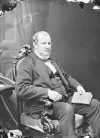 Galt was a British-Canadian statesman. Born in London, he immigrated to Canada in his teens and began his political career there in 1849, eventually serving several terms as minister of finance. Although he signed the 1849 manifesto favoring the annexation of Canada by the US, he became one of the most persistent and influential leaders of the movement for confederation of the provinces and later advocated Canadian independence. He was a founding member of what company that still exists today? Discuss
Galt was a British-Canadian statesman. Born in London, he immigrated to Canada in his teens and began his political career there in 1849, eventually serving several terms as minister of finance. Although he signed the 1849 manifesto favoring the annexation of Canada by the US, he became one of the most persistent and influential leaders of the movement for confederation of the provinces and later advocated Canadian independence. He was a founding member of what company that still exists today? Discuss
Source: The Free Dictionary
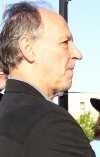 One of the leading filmmakers in contemporary German cinema, Herzog is a prolific director, screenwriter, and producer known for his vivid and poetic films. During the 1960s, he mostly made short films but completed his first feature, Signs of Life, in 1968. He went on to make a number of films noted for their acutely observed detail and tales of danger and escape. More recently, he has made several acclaimed documentaries. What criminal act started Herzog on his filmmaking career?
One of the leading filmmakers in contemporary German cinema, Herzog is a prolific director, screenwriter, and producer known for his vivid and poetic films. During the 1960s, he mostly made short films but completed his first feature, Signs of Life, in 1968. He went on to make a number of films noted for their acutely observed detail and tales of danger and escape. More recently, he has made several acclaimed documentaries. What criminal act started Herzog on his filmmaking career? 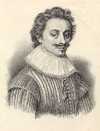 Constantijn Huygens was a Dutch humanist and poet and the father of famed scientist Christiaan Huygens. His descriptive and satirical poems were highly esteemed, and both English and French monarchs knighted him in recognition of his genius. Thousands of his letters have survived to this day and attest to his wide acquaintance with contemporary scholars, including Descartes and Donne. Huygens was also an accomplished musician and composer. How old was he when he died?
Constantijn Huygens was a Dutch humanist and poet and the father of famed scientist Christiaan Huygens. His descriptive and satirical poems were highly esteemed, and both English and French monarchs knighted him in recognition of his genius. Thousands of his letters have survived to this day and attest to his wide acquaintance with contemporary scholars, including Descartes and Donne. Huygens was also an accomplished musician and composer. How old was he when he died?  The leading spokesman of the Center Party, Kekkonen became Finland’s prime minister in 1950 and succeeded Juho Paasikivi as president in 1956. After his reelection in 1962 and 1968, the Finnish parliament voted to extend his term, which was to expire in 1974, until 1978, at which time he was elected to his final term as president. Throughout his career, Kekkonen succeeded in maintaining friendly neutrality with the USSR. What caused him to resign the presidency in 1981?
The leading spokesman of the Center Party, Kekkonen became Finland’s prime minister in 1950 and succeeded Juho Paasikivi as president in 1956. After his reelection in 1962 and 1968, the Finnish parliament voted to extend his term, which was to expire in 1974, until 1978, at which time he was elected to his final term as president. Throughout his career, Kekkonen succeeded in maintaining friendly neutrality with the USSR. What caused him to resign the presidency in 1981? 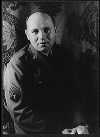 Regarded as one of the most important African-American artists of the 20th century, Bearden first achieved recognition for his complex, semiabstract collages of photographs and painted paper on canvas in Europe following WWII. By the 1960s, he was the preeminent collagist in the US. A prolific artist, he created some 2,000 works, many of which focus on aspects of African-American culture, including music and family. A Bearden mural in a subway station in what city was once valued at $15 million?
Regarded as one of the most important African-American artists of the 20th century, Bearden first achieved recognition for his complex, semiabstract collages of photographs and painted paper on canvas in Europe following WWII. By the 1960s, he was the preeminent collagist in the US. A prolific artist, he created some 2,000 works, many of which focus on aspects of African-American culture, including music and family. A Bearden mural in a subway station in what city was once valued at $15 million?  After working numerous odd jobs, Burroughs tried his hand at writing, publishing his first story under the pen name Normal Bean in 1912. Two years later, he published Tarzan of the Apes, a story about an English boy raised by apes in Africa. Wildly successful, the book was the first in a series of 27 Tarzan titles. Burroughs later moved to Hollywood to supervise the filming of the first of the extremely successful Tarzan films. What city is named after his most famous character?
After working numerous odd jobs, Burroughs tried his hand at writing, publishing his first story under the pen name Normal Bean in 1912. Two years later, he published Tarzan of the Apes, a story about an English boy raised by apes in Africa. Wildly successful, the book was the first in a series of 27 Tarzan titles. Burroughs later moved to Hollywood to supervise the filming of the first of the extremely successful Tarzan films. What city is named after his most famous character? 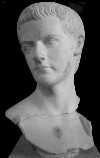 Caligula was a Roman emperor who began his reign upon the death of the extremely unpopular Tiberius. His reign was initially welcomed, but, shortly after assuming power, he suffered a severe illness that is widely believed to have rendered him insane. He earned a reputation for cruel autocracy, torture, and execution and was finally assassinated by a tribune of the Praetorian Guard. Caligula’s real name was Caius Caesar Germanicus. Why was he nicknamed Caligula as a child?
Caligula was a Roman emperor who began his reign upon the death of the extremely unpopular Tiberius. His reign was initially welcomed, but, shortly after assuming power, he suffered a severe illness that is widely believed to have rendered him insane. He earned a reputation for cruel autocracy, torture, and execution and was finally assassinated by a tribune of the Praetorian Guard. Caligula’s real name was Caius Caesar Germanicus. Why was he nicknamed Caligula as a child? 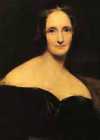 In 1816, 18-year-old Mary Wollstonecraft Godwin and her soon-to-be husband, poet Percy Bysshe Shelley, traveled to Geneva to spend the summer with poet Lord Byron. Forced indoors by unpleasant weather, the friends amused themselves by sitting around a fire and reading ghost stories. Byron suggested they each write their own supernatural tale, and the story that Mary wrote became the basis for her novel, Frankenstein: or, The Modern Prometheus. What real-life events may have inspired her?
In 1816, 18-year-old Mary Wollstonecraft Godwin and her soon-to-be husband, poet Percy Bysshe Shelley, traveled to Geneva to spend the summer with poet Lord Byron. Forced indoors by unpleasant weather, the friends amused themselves by sitting around a fire and reading ghost stories. Byron suggested they each write their own supernatural tale, and the story that Mary wrote became the basis for her novel, Frankenstein: or, The Modern Prometheus. What real-life events may have inspired her? 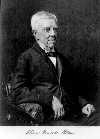 The father of the US Supreme Court justice of the same name, Holmes was an American physician, poet, and humorist. After beginning his medical career as a general practitioner, he shifted to the academic field and became dean of the Harvard medical school. However, he is perhaps best known for the poem that won him national acclaim—”Old Ironsides,” a protest against the scrapping of the USS Constitution, which helped save the ship. What common medical term was coined by Holmes?
The father of the US Supreme Court justice of the same name, Holmes was an American physician, poet, and humorist. After beginning his medical career as a general practitioner, he shifted to the academic field and became dean of the Harvard medical school. However, he is perhaps best known for the poem that won him national acclaim—”Old Ironsides,” a protest against the scrapping of the USS Constitution, which helped save the ship. What common medical term was coined by Holmes? .gif) Seton was the first native-born US citizen canonized by the Roman Catholic Church. Six years after she founded the Society for the Relief of Poor Widows with Small Children, her husband died, leaving her with five young children. She later opened a free Catholic elementary school and is considered the mother of the US parochial school system. In 1813, she founded the Sisters of Charity, the first US religious order, and served as its superior until her death. Seton is the patron saint of what?
Seton was the first native-born US citizen canonized by the Roman Catholic Church. Six years after she founded the Society for the Relief of Poor Widows with Small Children, her husband died, leaving her with five young children. She later opened a free Catholic elementary school and is considered the mother of the US parochial school system. In 1813, she founded the Sisters of Charity, the first US religious order, and served as its superior until her death. Seton is the patron saint of what?